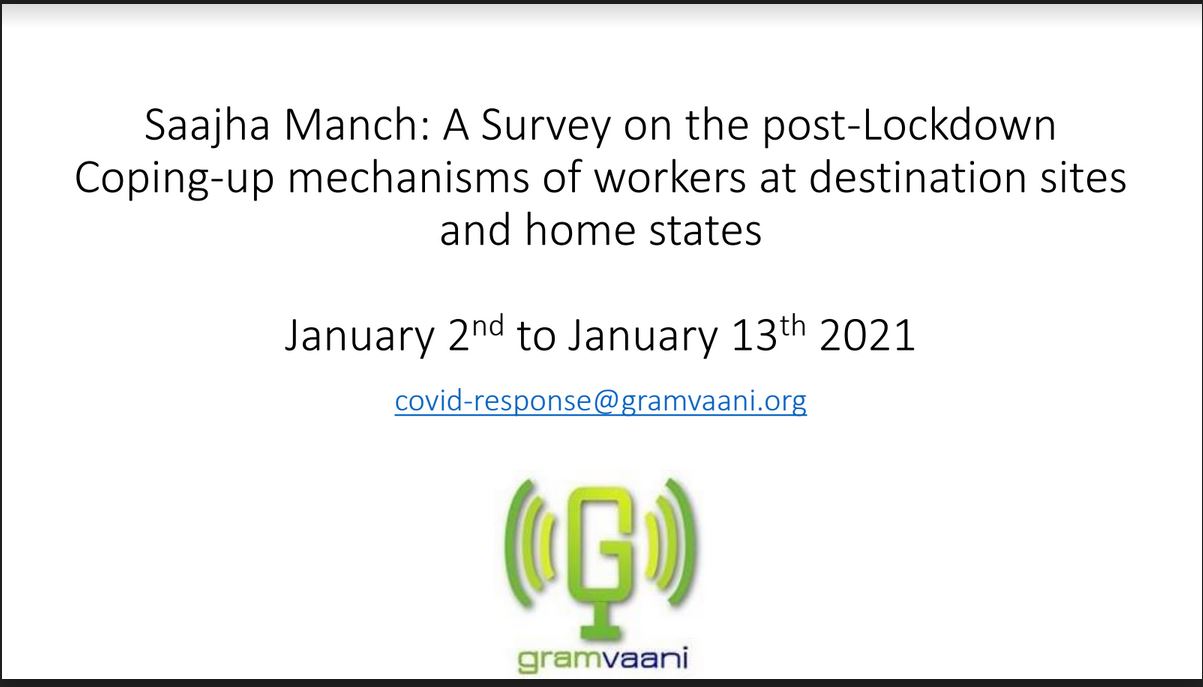Results are now available from our post-lockdown survey on coping-up mechanisms of workers while they are out of work. The lockdown and the consequent economic slowdown impacted the availability of work for migrants who travel to cities in search of work. Our previous survey on post-lockdown working conditions, showed that wages were lower, workload had increased, access to social protection through PF and ESI for organized sector workers was broken, and workers were left with even lower bargaining power than before. In the current survey, we reached out to workers who were still out of work to find out what kind of coping mechanisms were they using.
We did the survey among 83 respondents who had returned from their villages to the cities and were looking for work, and another 56 workers who were still at their villages.
Among those who had returned to the destination work locations:
- The automobile sector seemed to have revived and was giving jobs back to the previous workers, but other industries like garments have been more badly hit. Construction is the worst hit. According to the latest reports however, the automobile sector has laid off many workers now.
- Those who have started their own work as vegetable vendors or with other small businesses, 79% used their own money and the rest took loans from money lenders. Nobody was able to avail government schemes or bank loans
- Only 30% reported being able to access PDS at the destination sites. None of this was through ONOC, but new ration cards that some of them had managed to arrange at the destination cities
- During the lockdown when they had returned to their villages, 65% were engaged in farming or non-agricultural labour. Only 58% were able to access PDS at their home locations, and only 38% got benefits from Anganwadi centres with take home ration or cash
- 80% of the respondents reported that they did not get any assistance from the government in finding employment at home
Among those who were still at their villages during the time of the survey:
- Most were engaged in agricultural work or non-agricultural labour. About 25% of them are still out of work
- 37% of the workers have worked under MGNREGA, another 37% did not choose to work under MGNREGA because of low wages. About 25% of unmet demand was reported by those who wanted to work but either no work was allocated to them or they did not have job cards
- Only 45% of the workers were able to avail PDS. Many did not have ration cards or were not able to get their due ration. Getting benefits of take home ration or cash for the nutrition of small children under the Anganwadi centers was also very low
- 54% reported that their employer had been in touch asking them to come back to work, but they chose not to go because of reports from their friends and colleagues about low wages and increased pressure at work
- 84% reported no assistance from the government to find work at home



